A major turning point for the retail consumer market is the rising significance of customer experience. While products, prices, and service can make or break a sale, it is customer experience that sets a brand apart from the competition, ultimately playing a critical role in customer attraction, engagement, and retention.
Experiential retail defined
In fact, according to KPMG, 78% of young consumers, specifically the millennials, prefer to spend money on an experience or event and share these experience-related purchases on social media. There is an emotional driver to this with 69% believing that attending experiences helps them connect better with friends, community, and people around the world.
Not surprisingly, the experiential retail consumer trend goes hand in hand with the goals of retailers in 2019. As revealed by Forrester, retailers are looking to invest in capabilities that grow revenue, reduce costs, improve products and features, and of course, improve customer experience both online and in-store.
According to Cognizant, more than 60% of retail sales today start online and then finish in-store for brands as diverse as Target, Williams Sonoma, Nordstrom, and Neiman Marcus. A multichannel and omnichannel strategy, experiential retail influences every step of the buyer journey from product discovery to purchase.
Experiential retail in action
Brands and retailers today approach experiential retail in unique ways, reflecting not only various goals but also their different consumer targets. From Asia to Europe, see how experiential retail falls into any or a combination of these four categories provided by Cognizant: convenient, communal, curated, and immersive.
1. Les Grands Magasins (France) – immersive, communal
France’s department stores, or les grands magasins, are fighting off the “apocalypse” of physical stores by reinventing the customer experience in the grandest of ways. For instance, Le Bon Marché featured an exhibition called “Geek Mais Chic” with 3D printed shoe soles and algorithmic perfume selection in April 2019. The same department store also installed a skate park, a yoga studio, and a tattoo artist, and showcased all things Los Angeles a few months prior.
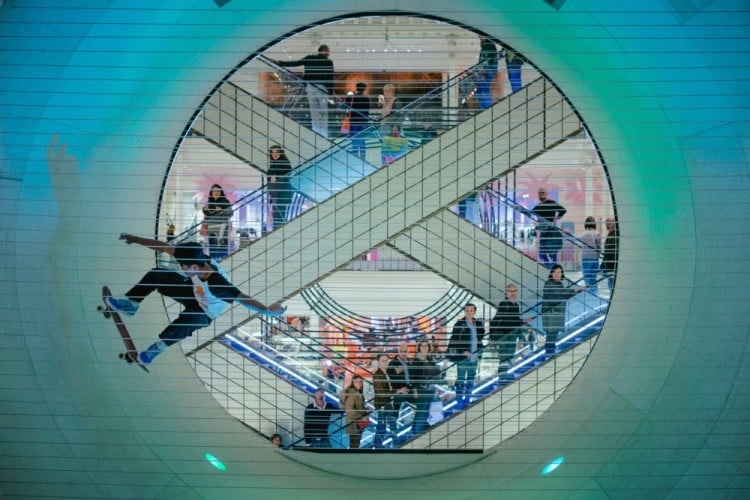
Image credit: The New York Times
“The mission has evolved from a logic of transaction to a logic of relationship. We need to surprise, advise and entertain our clients, in order to offer them unique experiences that a website can’t provide,” shared Nicolas Houzé, chief executive of Galeries Lafayette.
2. Myntra’s Roadster Go (India) – convenient
For consumers who value speed and convenience more than anything, Myntra outdoor lifestyle brand Roadster excels in combining fashion and technology to deliver a “hi-tech fashion omni-channel experience.”
The Roadster Go stores are 100% RFID (radio frequency identification) enabled, allowing consumers to know real-time online prices and do a self-checkout in 30 seconds. By just putting the products in the RFID tray, consumers immediately see product details and the bill, then pay using a debit or credit card. Product scans and security tags removal no longer have to be done individually.
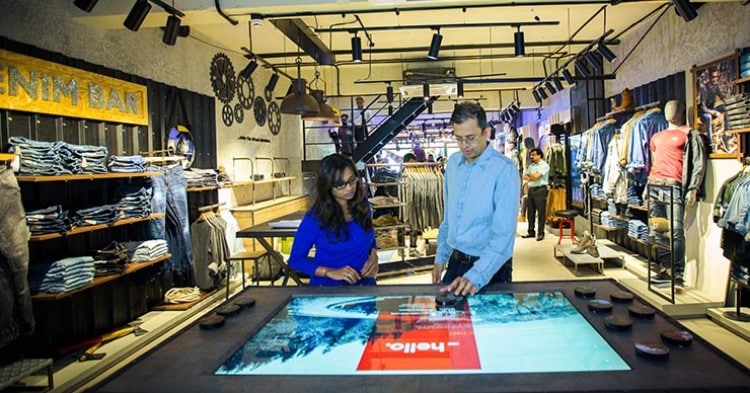
Image credit: Myntra
Myntra is one of the early adopters of breakthrough retail technologies. Besides the in-store experience, the retailer also implemented visual search on its website allowing shoppers to search for products using just an image. In relation, Myntra makes online shopping experience even more convenient with a shop similar feature, bringing consumers closer to visually similar products they are interested in.
3. Gentle Monster (South Korea) – immersive
For a sunglasses and optical brand, Gentle Monster offers impeccable in-store experience. Visiting a Gentle Monster store is like entering a contemporary art gallery as the brand showcases products among themed sculptures and installations.
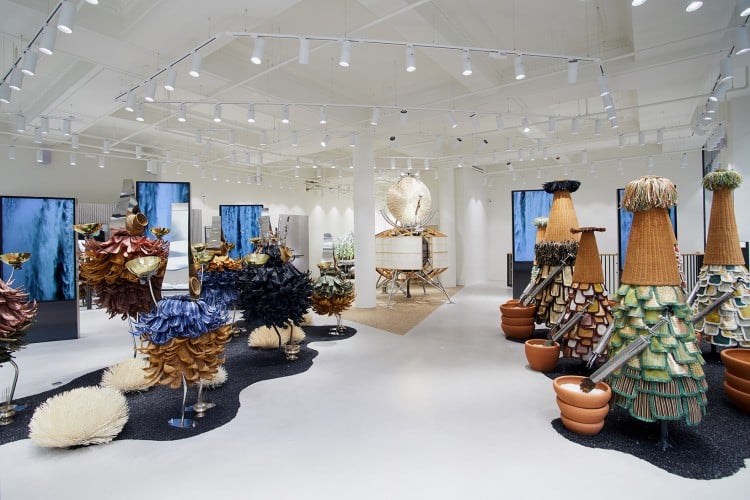
Image credit: Hypebae
To make things more extra, each of its 41 stores worldwide has art displays that are completely different from one another. The brand also has its own music and fragrance to further set itself apart, and often changes the stores’ look and feel to give consumers a reason to come back.
4. Rent the Runway (US) – curated, convenient
For brands and retailers who think it is no longer worth investing in physical stores, think again. Rent the Runway, an e-commerce first fashion retailer actually opened brick-and-mortar locations to build brand awareness and provide consumers the ability to try-on clothes.
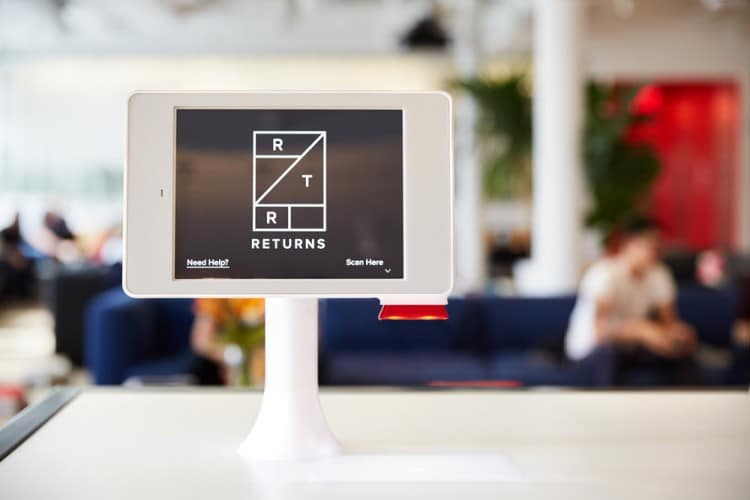
Image credit: Rent the Runway
Due to the growth of its subscription business, Rent the Runway adds another layer of convenience for its consumers. “We’ve seen how a physical footprint can provide even more convenience and magic to the customer base,” shared Jennifer Hyman, co-founder and chief executive of Rent the Runway. By establishing drop boxes in WeWork areas, consumers can simply walk-in, drop off inventory clothing, and immediately choose new items from their subscription.
5. Gucci (Italy) – immersive, communal
A concoction of the senses, Gucci attracts fashion lovers, museum enthusiasts, and food aficionados to its restaurant and concept store, Gucci Garden. Situated in Florence’s cultural masterpiece, Piazza della Signoria, Gucci delivers a truly immersive experience that showcases memorabilia and contemporary art pieces in addition to topnotch Italian dishes and carefully selected Gucci products.
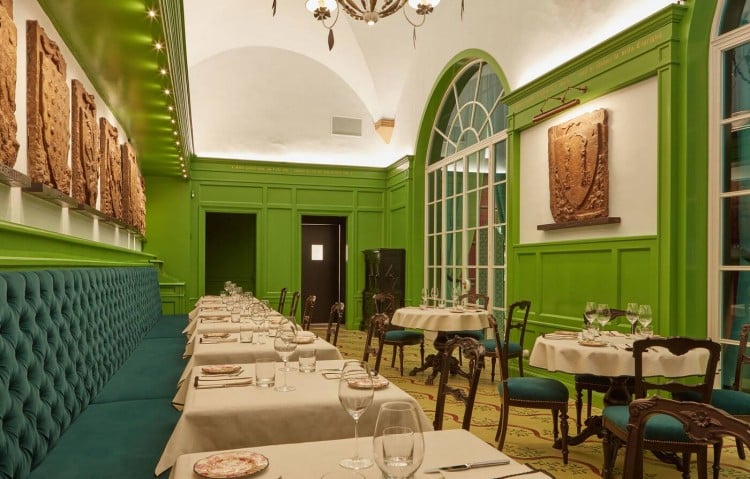
Image source: Gucci
Moreover, with a $10 entry fee, consumers feel good for automatically supporting restoration projects around the city of Florence. Partly attributed to these new customer experiences, Gucci saw a 48% rise in revenue in the first quarter of last year.
6. Farfetch (UK) – immersive, convenient
With the Store of the Future, Farfetch aims to “dramatically improve retail productivity by capturing invaluable customer data and enhancing human interactions between shoppers and sales associates.”
Examples of its digitally-enhanced experiences include customer recognition the moment she enters the store, RFID-enabled clothing rack that auto-populates her wishlist with products she is interested in based on her browsing, and mobile payment experience.
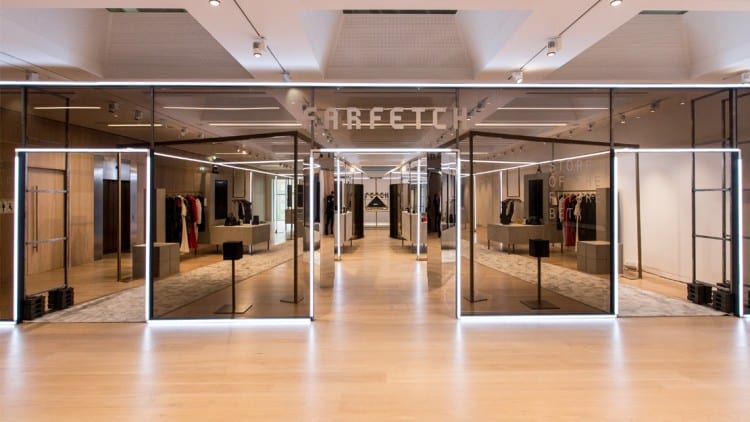
Image credit: Farfetch
Moreover, Farfetch also recently joined retailers such as Asos and John Lewis, offering a visual search capability in its iOS app. Called the “See it, Snap it, Shop it” feature, shoppers now have the power to do an image search for visually similar products of a style inspiration they encounter from practically anywhere.
7. Revolve (US) – curated
From Ibiza to Phuket, Revolve, through its Around the World campaign, sends influencers to hot destinations around the world, showcasing not only their curated products in the process but also desirable travel experiences that consumers want to attain for themselves.
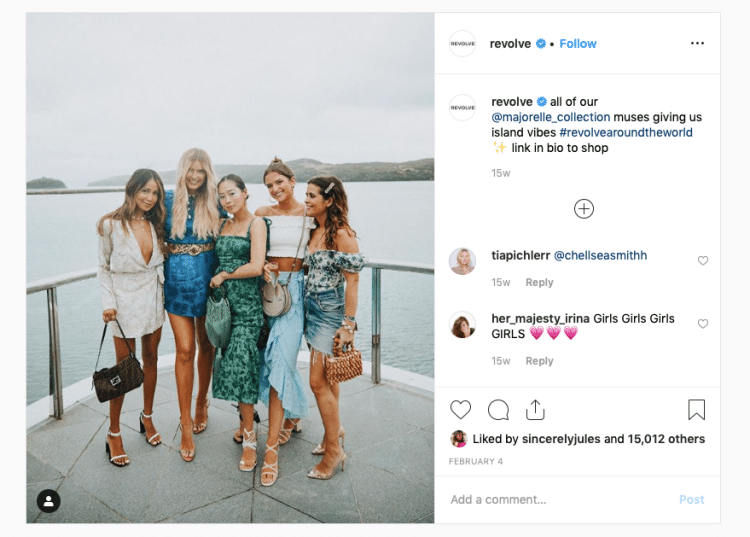
Image credit: Revolve
After more than 10 trips worldwide, Revolve is now known for its powerful influencer and social media strategy that helps drive organic engagement, supplemented by strong data-driven back-end operations. In fact, influencer marketing brings in between $600 to $700 million in revenue a year to the fashion retailer.
8. Style Nanda (South Korea) – communal
South Korea’s café culture is only becoming stronger and beauty retailer, Style Nanda, through its Pink Hotel and Pink Pool Café, delivers the perfect mix of coffee retail, beauty products, and aesthetically pleasing “Instagrammable” store interior design and layout that pull consumers from around the world.
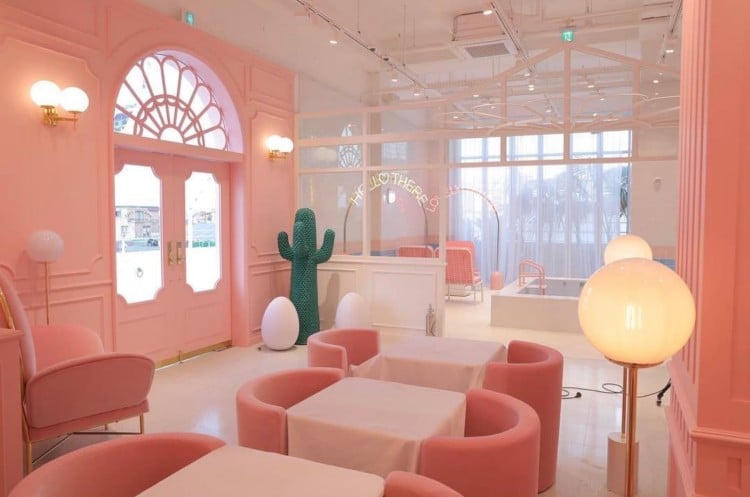
Image credit: Style Nanda
Tugging at consumers’ thirst for shareable extraordinary experiences, katfuz on TripAdvisor left the following review, “[…] Check this place out if you are into pink-lemonade-cottoncandy-makeuplove-fashionseeking or simply if you like quirky places with a touch of princessy-magical charm […]” Of course, she left with a bag and a lipstick too.
9. West Elm (US) – immersive, communal
Besides carrying exclusive brands, West Elm sets itself apart by localizing its retail spaces. From West Elm Detroit to West Elm Savannah, consumers feel the customized vibe that is unique to each specific city.
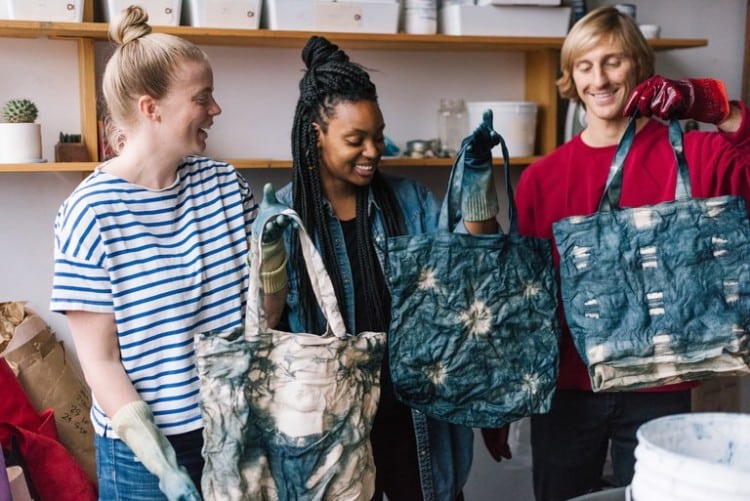
Image credit: Architectural Digest
Taking it a step further, the furniture retailer collaborates with community-based designers and artists, conducting workshops such as natural indigo dyeing with Shira Entis in Brooklyn and art welding with Jack Sanders in Austin. The same kind of localized customer experiences has been extended to West Elm Hotels which is another channel that the retailer has started in 2016.
10. Ikea (Sweden) – communal
Long before the term experiential retail fills up the headlines, IKEA has already hosted its first sleepover in 2011 as a PR stunt but in retrospect an effective customer experience strategy that has been going on since.
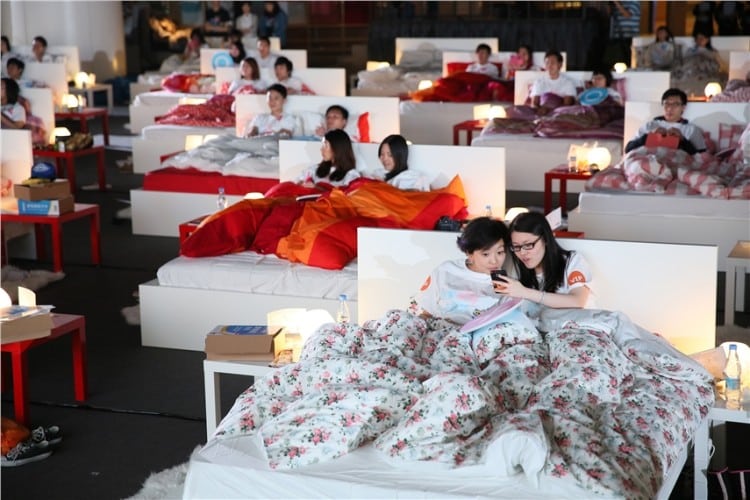
Image credit: Campaign Asia
The source of idea? An independent consumer Facebook group called “I Wanna Have a Sleepover in Ikea.” Listening to its consumers, “pajama parties” has been going on in Ikea stores worldwide with Canada and Australia offering the latest ones. Chosen participants received goody bags filled with sleep essentials and enjoyed the in-store sleepover with a yoga and meditation corner, breakfast in bed, and massages.
Experiential retail is the future
Looking at these experiential retail examples, one thing is obvious. Brands and retailers can leverage the combined strength of physical and digital assets. Whether it is a need for speedy transactions, emotional connection, enviable inspiration, and exclusive retail purchases, experiential retail, at the end of the day, still and always solves consumers’ pain points.
Highly focused on the visual and social realms, one technology that improves experiential retail initiatives, especially at the product search and discovery phase, is visual search. It solves the struggle of translating visual inspiration into words, finding the right product with ease, getting personalized style recommendations, and purchasing a complete look. Visual search answers difficult questions such as, “What goes with this?” or “What is this design called?” or “How do I style this item?”
Amplifying the customer experience across the buyer journey, visual search is part of the future of retail where, as summarized by Cognizant, “it will not be about having a large variety of products, as it has been in the past; rather, it will involve winning over consumers with thoughtful curation of products and experiences.”